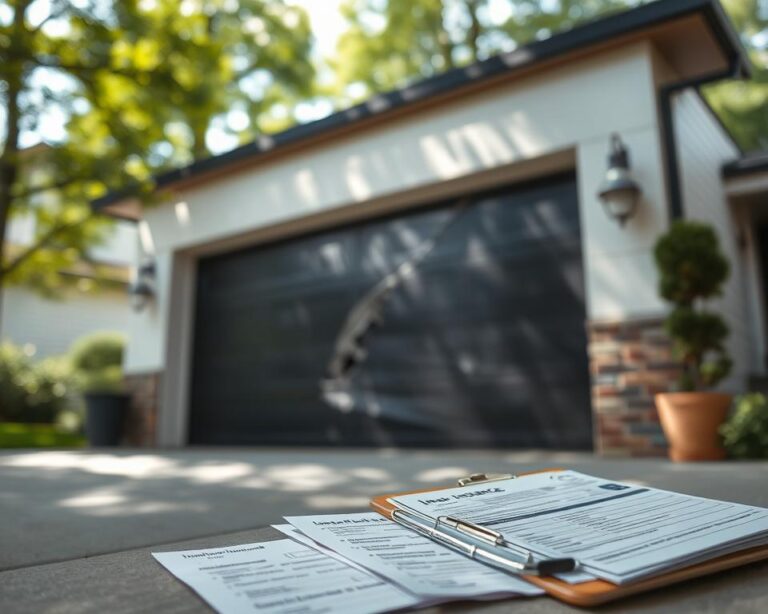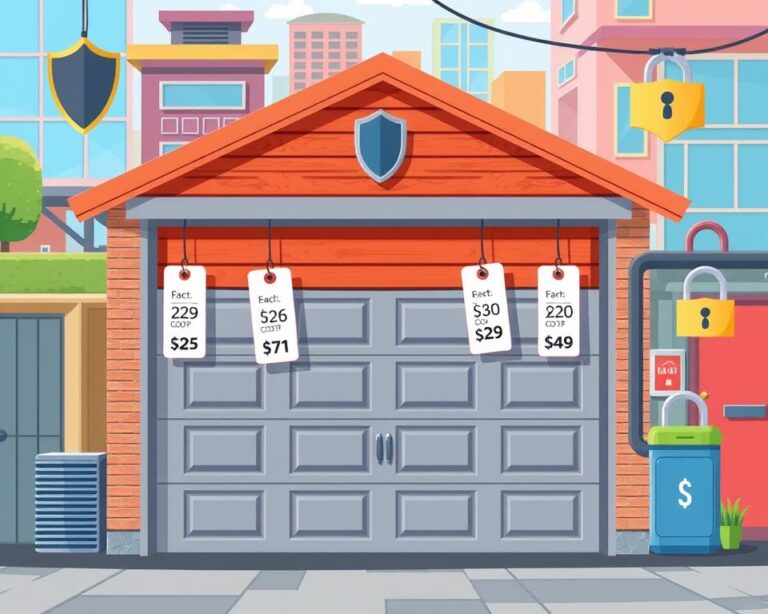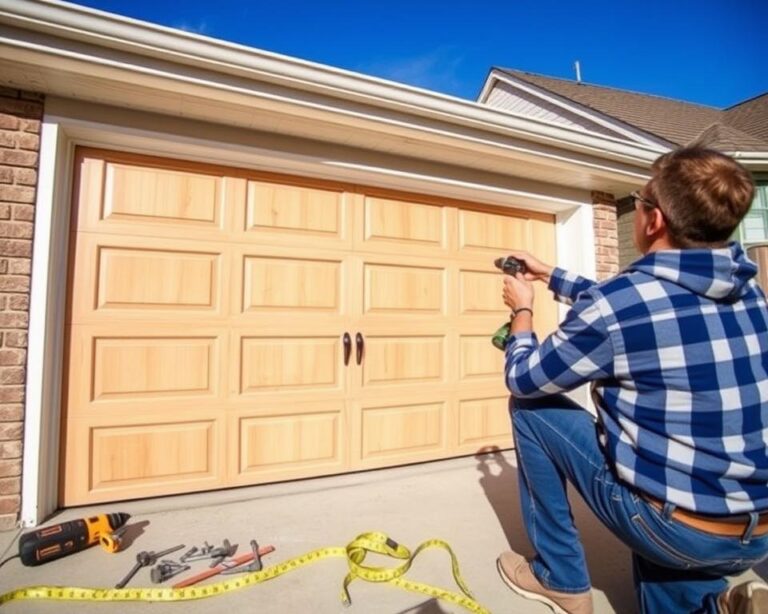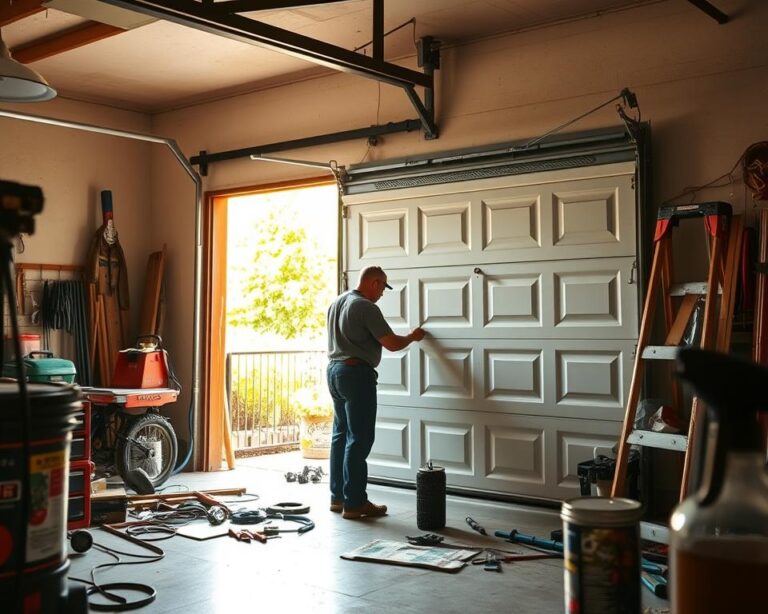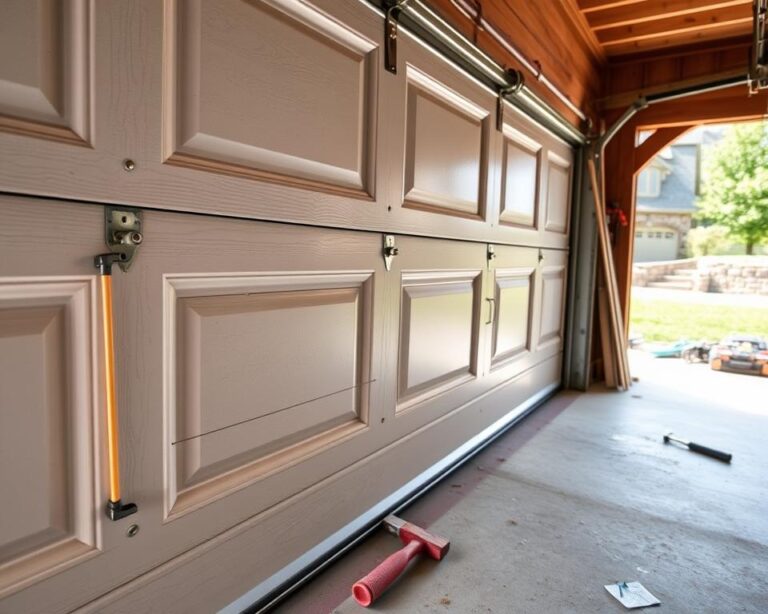How to Price Items for a Garage Sale
We’re excited to share our guide on pricing garage sale items. This will help you get the most out of your sale. Pricing is key to a successful garage sale. We’ll give you tips and strategies to find the perfect price for each item.
When pricing items, finding the right balance is important. Most items should be priced between 10%-30% of their original price. This makes them competitive and appealing to buyers. We’ll talk about researching prices, considering the item’s condition, and being flexible with pricing.
By following our guide, you can increase your chances of a successful sale. We’ll share expert tips and strategies for pricing items correctly. This includes using pricing guides and researching prices. Our goal is to help you have a successful garage sale and make the most out of your sale.
Understanding the Basics of Garage Sale Pricing
Setting prices for garage sale items involves knowing what buyers expect and what affects item values. Buyers look for deals but also want fair prices. To price items right, research, consider condition, and be open to adjusting prices. Start with 10% to 30% of the original price.
Think about the item’s demand and original price when pricing. For example, top condition items might cost up to 50% of retail. Items in fair or used condition should be priced lower. This helps us create a pricing guide and sell more.
For better pricing, price items individually and label them clearly. Be ready to negotiate, which is key for high-value items. By understanding value factors, we can attract buyers and meet our sales goals.
The General Rule of Thumb for Pricing
Start with a low price and be open to negotiations. This strategy draws more buyers and boosts sales chances. Be flexible with prices, adjusting based on feedback and demand.
What Buyers Expect at Garage Sales
Buyers seek bargains but expect fair prices. They might want specific items like tools or furniture, willing to pay more. Knowing what buyers want helps us set attractive prices.
Factors That Influence Item Values
Item values are shaped by condition, original price, and demand. Consider these when pricing and adjust based on feedback and demand. This approach attracts buyers and meets our sales goals.
Research and Preparation Before Setting Prices
Hosting a successful garage sale requires research and preparation. It’s important to price items correctly to attract buyers and meet your sales goals. A good pricing strategy can significantly increase your profits.
To start, research the prices of your items. Look at online marketplaces, visit thrift stores, and ask friends and family. This helps you understand what similar items are worth. Creating a pricing guide keeps your prices consistent.
Here are some tips for researching prices:
- Check prices for similar items on eBay, Craigslist, or Facebook Marketplace.
- Visit local thrift stores or second-hand shops to see their prices.
- Ask friends and family for their thoughts on pricing.

By following these tips and using a solid pricing strategy, you’ll host a successful garage sale. It will attract buyers and increase sales.
How to Price Garage Sale Items by Category
When pricing items for a garage sale, think about the item’s category. We’ve got some tips to help you price your items right. A pricing guide can also help you get the best value for your items.
Let’s look at some categories and their prices. For example, clothes and accessories can cost between $1 to $3. This depends on their condition and original price. Electronics can be priced at 1/3 the retail price. If they’re new in the package, it’s 1/2 the retail price.
Clothing and Accessories
Clothing like t-shirts and baby clothes can cost between $1 to $3. Jewelry prices range from 50¢ to $2. Try pricing items in bundles, like $1 each or five for $4.
Furniture and Home Decor
Furniture like coffee tables and dining chairs can cost between $25 to $100. Kitchen gadgets and dishes are priced between $1 to $30. Rugs and pillows can cost between $20 to $25 and $1 to $3, respectively.
By following these tips, you can price your items right. This will attract more buyers. Remember, be flexible and open to negotiations. With practice, you’ll get better at pricing your items.
Common Pricing Mistakes to Avoid
When pricing items for a garage sale, common pricing mistakes can greatly affect success. To steer clear of pricing mistakes to avoid, it’s key to research, consider item condition, and be open to negotiations.
Some common pricing mistakes include setting prices too high or too low. Not researching prices and being too rigid with pricing are also errors. For instance, items in excellent or like-new condition should be priced at 50% of the original retail. Good condition items should be priced between 25% to 30% of the original retail.
To sidestep pricing mistakes to avoid, keep these tips in mind:
- Research prices to find the fair market value of an item
- Price items based on their condition
- Be ready to negotiate and lower prices if needed
By avoiding common pricing mistakes and following these tips, you can have a successful garage sale. Stay flexible and adjust prices as needed to meet your sales goals.
Using Technology and Tools for Pricing
We can use technology to make our garage sale easier. There are many pricing tools out there. They help us find the right prices and manage our sales well.
Mobile apps can show us what to charge for items. Online marketplaces can also guide us on pricing. This makes setting prices a breeze.
Technology brings many benefits. It makes pricing more accurate and saves us time. It also helps us track sales and understand what customers like.
We can also keep up with market trends online. This way, we can set prices that attract buyers. Tools like online marketplaces, mobile apps, and digital tags are very helpful.
Using technology makes our garage sale more efficient and profitable. It helps us sell items fast and for good prices. Whether it’s apps, online marketplaces, or digital tags, tech is key to success.
Psychology of Pricing That Drives Sales
The way we price items at garage sales greatly affects sales. Knowing how customers see prices and making smart pricing choices is key. For example, pricing at $0.99 instead of $1.00 can make a deal seem better, which can influence buying decisions.
By using the psychology of pricing, sellers can craft a pricing plan that suits them. Lower prices can encourage more buying and create a sense of urgency. Also, pricing strategies like bundling items or giving discounts for buying in bulk can boost sales.
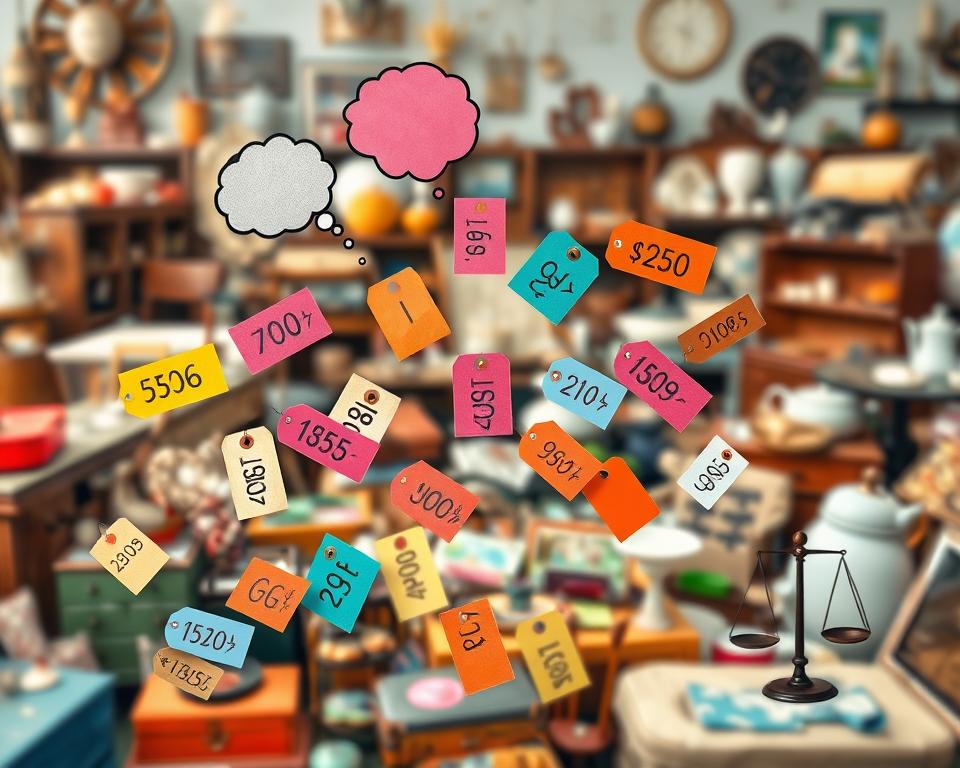
- Setting prices based on the condition of the item, with “like new” items priced higher than “gently used” or “worn” items
- Using price endings such as $0.99 to create a perception of a better deal
- Offering discounts for bulk purchases or bundling items together
Understanding the psychology of pricing and using smart strategies can help sellers increase sales. This makes a garage sale a success.
Making Your Garage Sale a Profitable Success
To make your garage sale a success, planning and research are key. Follow strategic pricing, use technology, and employ smart sales tactics. This way, we can earn more and make the event rewarding.
First, create a detailed pricing guide for your items. Use our research on prices for clothes, electronics, furniture, and toys. This ensures your profitable garage sale has prices that attract buyers.
Then, use mobile apps and online marketplaces to research prices. This keeps you updated on market trends. It helps you set competitive prices and avoid underpricing your items.
Lastly, use smart sales strategies like bulk pricing and bargaining. These methods increase your successful garage sale earnings. They also make shopping fun for your customers.
By using these tips, you’ll likely meet your goals and have a profitable garage sale. Happy selling!


